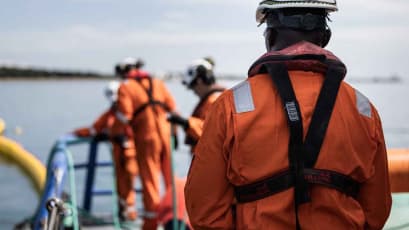Using AUVs for oil spill response: rapid underwater detection and monitoring
AUVs for oil spill response operations
Early investigation is critical to the assessment and subsequent management of oil spill events; AUV’s can be mobilised rapidly and can be operational soon after spill events have been identified, communicating near real-time information to a secure web portal.
The use of autonomous gliders and mini AUVs enhances the ability of the responders to collect greater volumes of data over time than is generally possible with the use of profiling or towed instruments from manned vessels.
Additionally, gliders and AUV’s can be deployed from ships of opportunity with relatively little training compared to traditional oceanographic sampling methods.
Ultraviolet Fluorosensors can detect the presence of hydrocarbons in the water column, which supports us in assessing the effectiveness of dispersant operations.
- Certain compounds, such as aromatic hydrocarbons, present in petroleum oils absorb ultraviolet laser light and become electronically excited.
- This excitation is quickly removed by the process of fluorescence emission, primarily in the visible region of the spectrum. By careful choice of the excitation laser wavelength and range-gated detection at selected emission wavelengths, petroleum oils can be detected and classified into three broad categories: light refined, crude or heavy refined.
OSRL have partnered with Blue Ocean Monitoring Limited. This agreement provides OSRL access to Blue Oceans Riptide and Slocum Glider for preparedness and response operations. The AUV capability is provided on a best endeavors basis, AUV’s can be mobilised by contacting the OSRL Duty Manager
Application for oil spill response
- Hydrocarbon Detection (Spill)
- Pipeline Monitoring (Leak)
- Plume Monitoring (subsea release)
- Monitoring for on-going leaks and spills
- Gas monitoring (safety)
- Met ocean Surveys (Operational)
- Environmental Surveys (Compliance)
Advantages of using AUV’s
- Robots are good for hazardous and hostile environments
- More efficient, persistent and numerous
- Cost and data quality
What role do AUVs play in a response?
- Primarily environmental and response monitoring
- Presence/absence of oil (surface, column, seabed)
- Dispersant efficacy (does it work or not?)
- Rapid strike (get the evidence)
- Modelling support with empirical data (bolster our Oil Spill Response models)
Riptide
- Buoyancy driven UUV
- Operates to depths of 300m
- Duration - 30hr/140hrs (Alk/Li)
- Max Speed (8 knots)
- Length 64cm; Weight ~5.5kg

Slocum Glider
- Buoyancy driven subsurface glider
- Operates to depths of 1000m
- Buoyancy engine (~1 knot)
- Hybrid thruster (~2 knots)
- Length 1.5m; Weight 50-60kg






